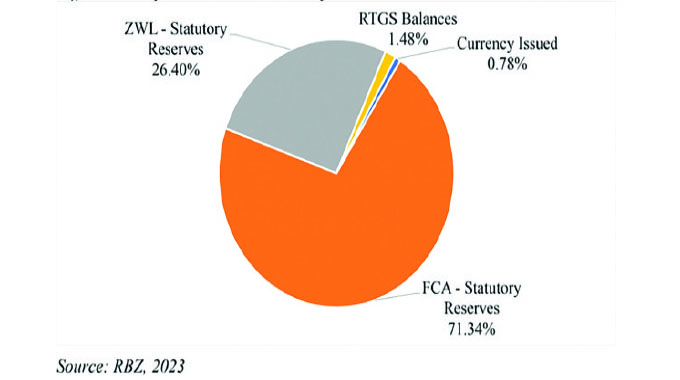Financial discipline: Don’t default on your loan obligation

 Sanderson Abel
Sanderson Abel
Economic conditions in a country determine, the quality of clients that banks will acquire. In stable economies, bank clients are of good quality and a credit culture is well established in the society.
This in turn makes it possible to maintain relatively low levels of Non-Performing Loans. In developing and unstable economies, it takes time for a good credit culture to be established and for enterprises to improve their quality.
This becomes one of the main reasons for high levels of loan defaults in such markets.
The challenges of loan defaults are not affecting Zimbabwe alone but affect a great number of developing and transitional economies. The resolution of the problems caused by loan defaults should be dealt at a whole society level, because ultimately, the entire community is the one that bears the impact of non-performing loans held by the banking sector.
When looking at the impact of loan defaults on economic activity, it is quite clear that a high level of distressed assets can hamper the process of economic recovery. It triggers lower demand from troubled households and non-financial corporations; on the other hand it also leads to tighter credit conditions and forces credit providers such as banks to constrain new lending. In such situations, the economy is likely to experience a prolonged contraction in credit-dependent investments with negative consequences for long-term growth.
Additionally, the lack of credit may result in a suboptimal composition of output growth by favouring sectors which are not the most productive, but are simply less dependent on external sources of financing. If the loan in default are not resolved in a timely manner but, instead, are continuously rolled over, the resources could remain tied up in unprofitable investments, impairing the allocative efficiency and future prospects of the economy.
There is need therefore, for the society to develop a culture of repaying their loan obligations either to the banks or other service and credit providers. The starting point should be understanding your loan agreement, staying on top of your loan information, and making sure to contact your loan servicer if you are having trouble making payments. This can help you avoid eventual default.
When applying for loans, enterprises and individuals should learn to provide accurate, reliable and complete information, which includes not only financial statements and the organizational structure of the enterprise but also the true purpose of borrowing. For specific projects, the borrowing enterprise should also be required to provide true information about the projects.
In practice, there have been cases where the enterprises provided false information to banks in order to acquire bank loans. False information can take the form of manipulated financial statements, which depends on whether accounting standards are appropriately applied and whether there is independent auditing. False information can also take the form of the fraudulent information about the projects to be financed. The recent collapse of a few well respected enterprises reveals that before being exposed they had taken advantage of complicated, non-transparent organizational structures unknown to other people and a complicated controlling structure to conduct related party borrowing through varied channels of financing they controlled or through obtaining shares at a number of financial institutions or quasi-financial institutions.
From a legal perspective, using false information to defraud financial facilities from banks or other non-bank financial institutions is illegal. There are laws and regulations that can be used to discipline and punish such acts.
Another way to avoid defaulting is through managing your borrowing. When borrowing there, is need to limit your exposure only to the amount that you want to use for the specific project. To be able to do this, there is need to create a budget to determine how much you really need to borrow. The challenge that has been experienced is that most people borrow in excess of their requirement and end up using the balance on things that they would not ordinarily buy. For example if you want to buy a car worth US$ 5 000, there is no need to borrow $10 000. The extra US$5 000 borrowed tend to cause challenges to the borrower; experience has shown that they would use that money extravagantly. This extravagance is the one that causes the default risk to rise because it will be in excess of what the project requires.
If you are having trouble making your monthly payments, there is need to contact your banker who will explain the options at your disposal. Some of the options that you may be advised to take include switching repayment plans to get a lower monthly payment, consider an income-driven repayment plan; change your payment due date, or get a deferment or forbearance. These options are not possible if you start praying hide and seek with your bank. Under such circumstances, the banks will simply resort to a clause in your loan contract and take legal action against you.
Avoid attempting to solve one problem by creating another problem. Some people who have found themselves close to defaulting have resorted to go and borrow from elsewhere. This is tantamount to playing a Ponzi game, also known as a “rob Peter to pay Tom” scenario. What this simply entails is that you will continue to face the same problem i.e. your capacity to repay remains compromised. You will not still be able to pay the other debt you have created which will see you remaining in the same predicament.
Sanderson Abel is an Economist. He writes in his capacity as Senior Economist for the Bankers Association of Zimbabwe. For your valuable feedback and comments related to this article, he can be contacted on [email protected] or on numbers 04-744686 and 0772463008








Comments